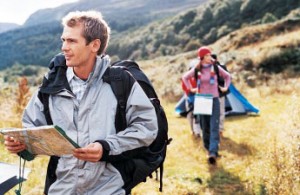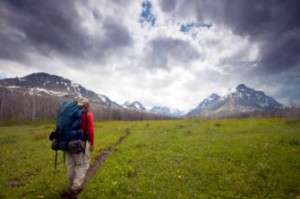Keeping Safe in the Outdoors
Our tips for staying safe in the great outdoors

Our tips for staying safe in the great outdoors
Outdoor activities such as hiking have been around and very popular for a long time. And why wouldn’t they be? With the breeze in your hair and the sun shining, spending time in the outdoors with friends can be the best thing in the world. However, it is important to be safe when doing so. Going on a trek in an isolated area holds a range of unpredictable and dangerous possibilities, which can be dealt with efficiently with the right preparation. Here are our tips for staying safe in the great outdoors.
Prepare
Andy Simpson of Mountain Rescue England and Wale says: “Lack of preparation before setting off is a major problem.” Ensure that you have checked the weather forecast, mapped your route and informed several people of your plan so they are aware of your general whereabouts. Also let them know when you leave and when you plan to be back so they can raise the alarm if something goes wrong. A bag with a collection of your essentials is also vital. This should include:
- Extra food and drink
- Torch (and spare batteries)
- Blanket
- First aid kit
- Clothes
- Map and compass
- Knife
- Matches (waterproof)
- Whistle
- Large orange plastic bag – Highly visible and helps attract attention (especially from the air), and will keep you warm and dry when you crawl into it.
Make sure you are seen
When going for a walk or riding a horse, you need to ensure that you can be seen by motorists and other road users. Wearing high visibility clothing or accessories that highlight your height and your width will allow you to be seen clearly. A headlamp or a torch will additionally make your presence known and will help you to see your route properly in the dark.
Stay nourished and hydrated

Plan ahead
Whilst you are hiking, it is important to ensure that you have a preplanned route of where you intend to go and that you share this with other people so they have an idea of where you are. Not only should you be well clothed for the expected weather conditions (and even the unexpected), but you should wear appropriate footwear that you feel comfortable walking in, especially for long distances.
Storms
If you are outdoors during a storm, while the chances of lightening striking you are small, it is important that you take precautions. Ensure that you stay away from single trees because if lightening strikes a single tree, it could break and harm you should you be standing underneath. Instead, try to seek lower ground, e.g. a valley. If there is no shelter or low ground around you, crouch or sit on the floor away from trees.
Emergencies
If you need to call for an emergency, call 999. If you don’t have a phone or it has no battery or service, stay where you are and blow on a whistle six times, making sure to repeat this every minute. If it is dark, flash your torch six times instead. If your mobile phone does have signal and you manage to get help, stay where you are leaving your phone on. Moving just a few yards could mean that you lose signal. If you are with a group of people unable to phone someone, send preferably three people to get help.
Get in touch with our design team








